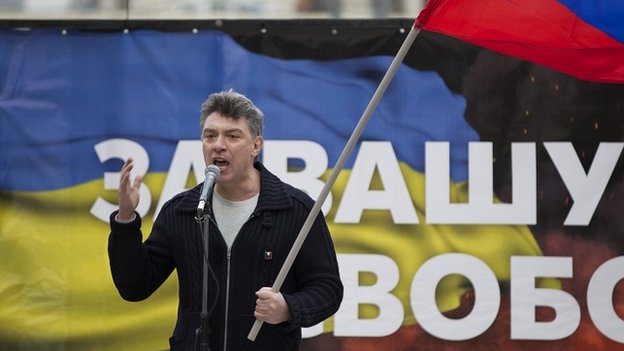Since Saturday, when Russia’s FSB director Bortnikov announced two men from the North Caucasus to be accused of the murder of Russian opposition figure Boris Nemtsov, news outlets and social media have been digging deeply in the “Caucasus trail”, while many users openly derided Kremlin’s version, claiming two random thugs could not perform such a sophisticated operation as murdering Nemtsov in view of the Kremlin and local CCTV. But, whether believe or not, the Caucasus version has certainly been the talk of the day.
While discussing any versions of Nemtsov’s murder, it’s important to note that literally all information on the investigation has so far come from the Kremlin. Indeed, we have been given no reason to suggest the men from Southern Russia were indeed the perpetrators of the crime. What we can see for ourselves is that this version has obfuscated all others, official and unofficial alike, from Nemtsov’s girlfriend’s jealous ex and the “Ukrainian trail” to Russian radical patriots enraged by propaganda and Putin trying to silence Nemtsov’s upcoming report on Russia’s war against Ukraine.
The last version, suggested by Nemtsov’s closest allies, perhaps should be considered closer. On Thursday, almost a week after Nemtsov’s death, Reuters reported seeing a note Nemtsov had scribbled to avoid the message being picked up by ubiquitous bugs. The message suggested Russian paratroopers from the city of Ivanovo had been reaching out to Nemtsov and could eventually tell him how exactly their comrades were killed in Ukraine. Thus, the Ukraine report version was raised to international level. Two days later, FSB arrested Anzor Gubashev and Zaur Dadaev. The next day, a Moscow court put them to jail, awaiting investigation. Few have brought up Nemtsov's Ukraine report since then.
This unexpected move somewhat mirrors Kremlin’s handling of the MH17 tragedy. From the start, state-controlled media and Russian officials have been obfuscating the real evidence with a myriad of versions in various shades of ridiculousness. After Bellingcat published a comprehensive report on the origin of the BUK launcher that shot down MH17, photographic evidence of a rocket launch from separatist-controlled territory, Russian media retorted with an fake
satellite image corroborating the “Ukrainian plane” version. The photo was shown on Russian state TV in less than a week and did its job of shifting the narrative from the compelling report at least inside Russia.
This time, the Kremlin once again may be intentionally shifting the attention from the incriminating evidence Nemtsov was planning to publish. The tactic once again has worked, the narrative now circulating around Chechens — who are, sadly, everyone's favorite enemy in Russia, from Ramzan Kadyrov-hating liberals to anti-migration nationalists. While it’s hard to believe that another proof of the Russian invasion would be politically dangerous to Putin, a closer look reveals some important facts making Nemtsov’s report stand out.
Firstly, we are yet to see a comprehensive report on the Russian invasion. While several compelling pieces of evidence have been published, they are often obfuscated (perhaps unintentionally) by groundless and mistaken claims of proof on the Ukrainian side. A thorough and detailed analysis would be hard to overshadow with another media-spun fake, and indeed could prove a hit to public opinion of Putin’s policies, as polls show two-thirds of Russians don’t want to see their sons sent to fight in Ukraine.
The other important feature of the report which would make it so dangerous to the Kremlin is its printed and redistributable form. While reports of Russian involvement in Ukraine rarely reach Russian media, and certainly stay out of print newspapers, a report printed in thousands of copies and handed out in the streets would hit Putin’s “offline” base – people who do not use the Internet and thus have no way of learning the facts of their country’s invasion of their “brotherly” neighbor.
As a recent VICE News report seems to suggest
, “little green men” in Ukraine are one of the heaviest-guarded open secrets in Russia. Even though telling the truth is not a death sentence in Russia, disseminating it to the general public might well be, as a Pskov councilman Lev Schlosberg witnessed in person when a story on Russian casualties in his independent paper earned him a beating to an inch of his life. Hours after Nemtsov’s death, investigators raided his apartment, taking away digital devices and perhaps notes on the Russian invasion report. Nevertheless, Russian independent investigators and Nemtsov’s allies continue their work on the report, vowing to publish it no matter what. With attention to Nemtsov’s report bound to be even higher after his death, the Kremlin’s obfuscation strategy may do Putin more harm than good in the long run.

